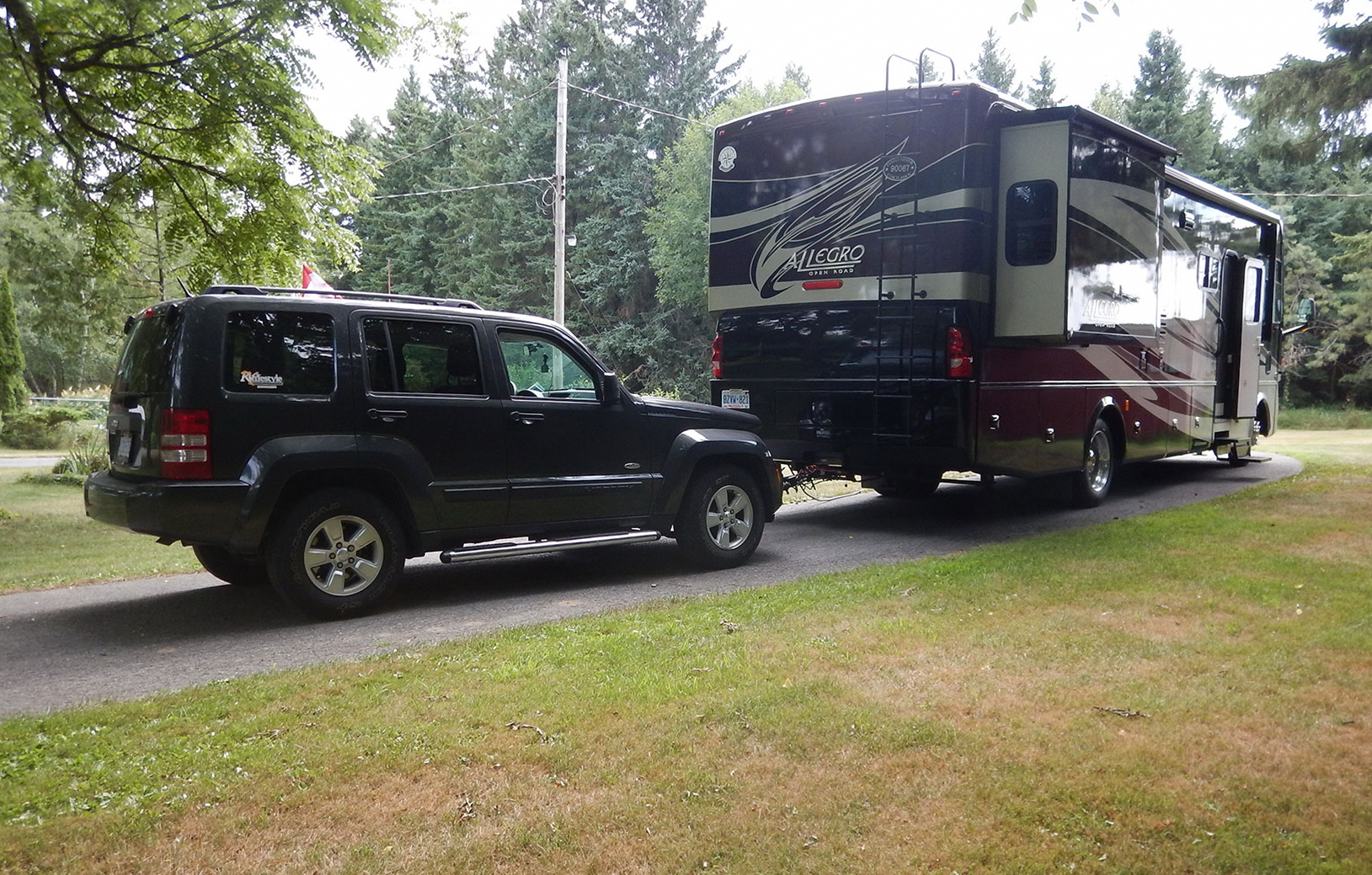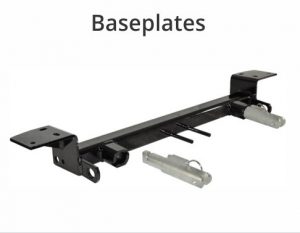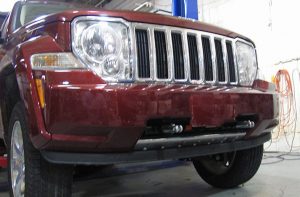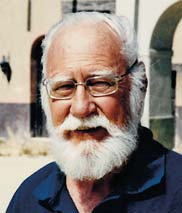
Our Technical Director, Garth Cane, gives us some expert tips on how to tow a car.
Bringing your car along on a motorhome trip can make sight-seeing, shopping or visiting friends and relatives much more convenient and enjoyable. It is far easier to navigate narrow streets and find parking spots with a car than it is with your large motorhome!
The most common method of how to tow a car or small truck behind your motorhome is to tow it with all four wheels flat on the ground. Towing “four-wheels down” is generally considered the safest way to bring your car or small truck along on a motorhome holiday. This is not as complex as you might imagine – it simply involves bolting a base plate to the chassis of the car, and this plate has connections for attaching a tow bar. The tow bar has adjustable arms that make it easy to connect it to your vehicle.
RV’ers who trade-in their towable car often do not want to undertake the effort and expense of removing the base plate from their trade-in and they simply install a new base plate designed for their new ride. If you can find someone who has a vehicle that they are getting ready to trade in, you might be able to get a great deal on a fully equipped ride… it’s one of the real advantages of joining a motorhome club, and getting to know your fellow RV enthusiasts!
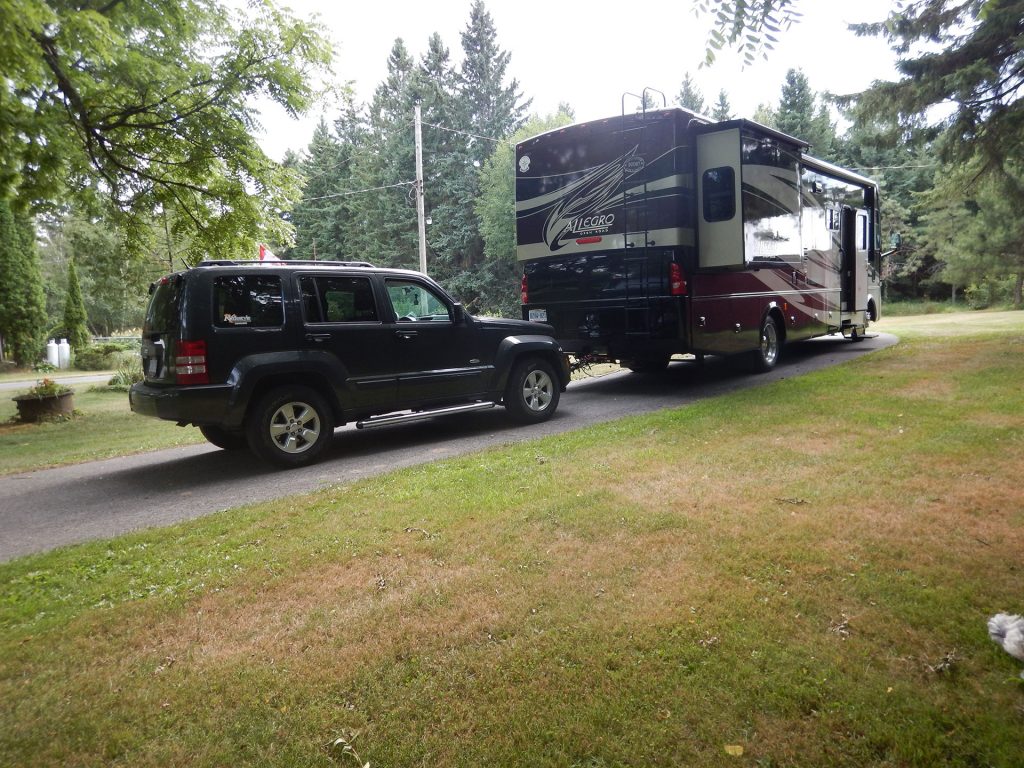
RV’ers who lease their vehicle are often prohibited from making any modifications that would be needed to make their cars towable. In this case, they generally opt to tow their car on a dolly. The dolly is a small two-wheel trailer with electric brakes, that is towed by your motorhome. The dolly attaches to the motorhome’s hitch with a ball type coupler, like the standard hitch system used for travel trailers. The tow dolly lifts the front driving wheels of your car or truck off the ground, so if you change vehicles, it is a simple process to use your existing dolly to tow a different vehicle, and if you change motorhomes, the dolly and towed vehicle can simply be hitched to your new ride.
Many race car drivers and RV’ers who own classic cars prefer to haul their car on a tandem axle flatbed trailer so that all four wheels are off the ground. These can be open trailers or enclosed models, depending on the amount of security desired by the owner. The lighter trailers are constructed of aluminum and weigh from 900 to 1,100 pounds empty, and some models can carry cars up to about 6,000 pounds. Some of the smaller trailers use ramps to load the car, while others tilt for ease of loading and unloading your car.
Brake Controls
The brakes in your motorhome are only designed to stop your motorhome, not the extra load from a trailer or towed car. Towing a car behind your motorhome is in the same class as towing a trailer. If you tow a trailer that weighs over 1,300kg (2,860 pounds), you are required by law to have brakes on the trailer. If your motorhome towing a car cannot stop in 40 feet when it is travelling 20 mph, then you need an auxiliary brake system in the car. An auxiliary braking system can reduce stopping distances by up to 50%. In Canada, auxiliary braking systems are required to have a break-away system that will bring the car to a complete stop if it accidentally breaks loose from the motorhome.
Many braking systems for towed vehicles are permanently installed, and others can be removed when the car is not being towed. Full braking removes the entire weight of the towed car from the motorhome during braking, but with proportional braking the harder you brake the motorhome, the harder the braking system pushes on the brake pedal of your towed vehicle.
Lighting the Towed Vehicle
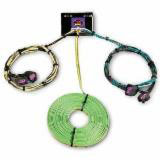
To make your car legal when towing, you are required to connect the clearance lights, turn signals, and brake lights from the motorhome. Years ago, you had to install three diodes on each side of the car to isolate the motorhome wiring from the car’s computer. Today, there are several manufacturers who have designed wiring kits that are simple to install. I have seen some cars being towed with a magnetic light bar on the roof that is wired to the motorhome.
For my own motorhome, I use a new style harness that connects from side to side through the access holes in the car’s chassis. To connect this, you just remove the OEM connector from the back of the tail-light and plug it into the new wiring harness. Then you plug the remaining connector on to the tail-light. Now run the four-wire flat wiring harness to the front of the car and attach it to the connector that matches the one on the back of your motorhome.
Maneuvering with a Towed Vehicle
You can back up with a motorhome and flatbed trailer combination, but not with a tow dolly or tow bar system. If you get lost and you must turn around, the car must be taken off the dolly or the tow bar needs to be unhooked before backing up.
When I use a tow dolly, it takes me about thirty minutes to find a spot to park the motorhome, get the car off the dolly, use the car to move the dolly out of the way, then remount the car back on the dolly after the motorhome is turned around.

With the tow bar system, it is simply a matter of pulling two pins and driving the car out of the way, then you turn the motorhome around, drive the car into position, and reconnect the pins. This takes me about five minutes. One very important thing that you must remember when unhooking a car that is towed with the tow bar system is that to tow “four wheels down” the car is going to be freewheeling when you disconnect from the motorhome. Always park on level ground and set the emergency brake to prevent the car from rolling away!
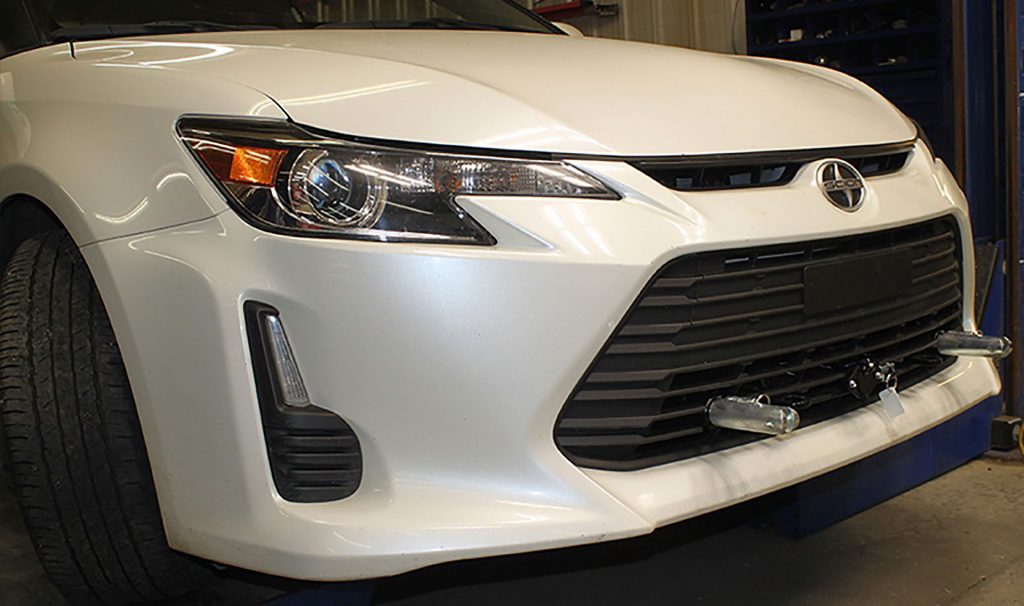
Today, many of the automatic transmission cars can be towed with four wheels down – but please pay very close attention to the transmission lubrication notes below…
The Buick Enclave and Envision, the Cadillac Escalade, the Chevrolet Colorado, Equinox, Malibu, Sonic, Traverse, and 4x4s like the Suburban, and Tahoe are all four-wheel down towable. So are the Dodge Durango, Ford C-Max, Edge, Expedition, Explorer, Fiesta, and 4x4s like the F150, F250 and F350; Ford also allows the Flex, Focus, Fusion, and Taurus to be towed. The GMC Acadia, Canyon, Terrain, Yukon, and Sierra 1500, 2500, and 3500 are also OK for “four-wheel down” towing. Jeep Cherokee, Grand Cherokee, and Wrangler Unlimited. If you like to drive in style, your Lincoln MKT 3.7L, MKX 3.7L MKX 2.7L, MKZ and MKZ Hybrid are “good to go”. Ram 1500, 2500HD, and 3500HD can be towed behind your motorhome. For the really fuel efficient RV’ers, the Smart For Two Coupe and Cabrio are popular tow-behind vehicles.
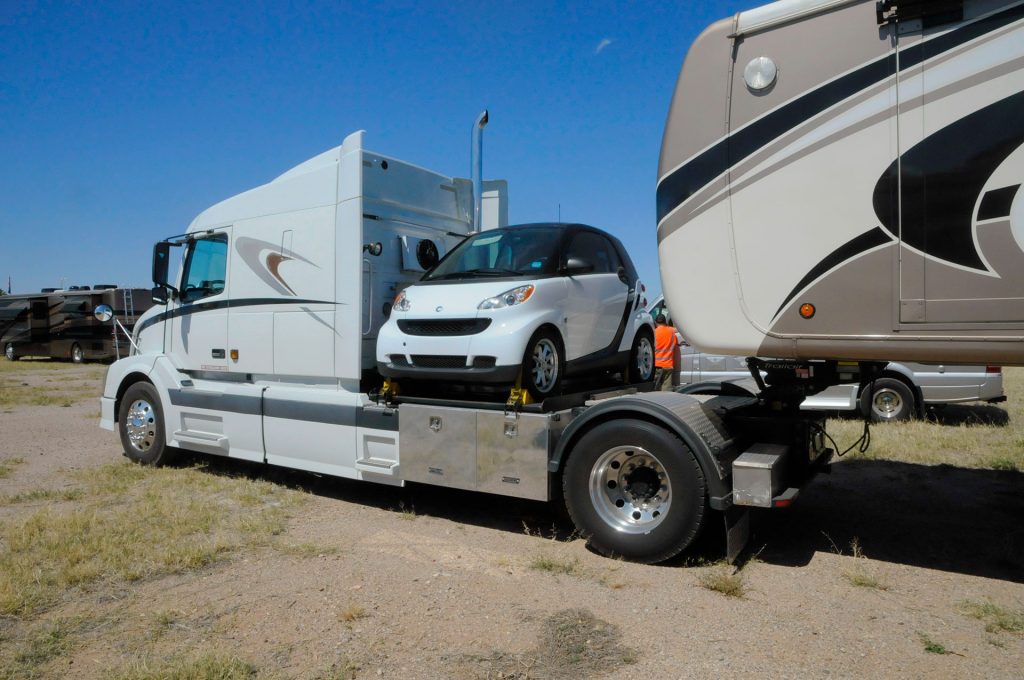
Transmission Considerations
Many manual transmission cars can be flat-towed in neutral without any modifications, and you can tow any front-wheel-drive manual transmission vehicle as far as you want and as long as you want. If the car has an automatic transmission that is lubricated by the output shaft of the tranny, it can be flat towed with no problem, but if it is lubricated by the input shaft of the transmission, you will need an auxiliary method such as a lubrication pump that is controlled by the ignition of the motorhome to keep the cooling fluids circulating while you are towing. Some rear-wheel-drive cars with automatic transmission can be towed using a drive shaft coupling system that uncouples the transmission from the differential at the rear wheels.
Having your car with you on a motorhome trip can be very helpful as you can negotiate through small towns and villages that may have streets that are too narrow for you RV. When you are heading out for a shopping trip or a meal at a good restaurant you do not need the stress of looking for a parking place for your motorhome that is within walking distance.


















